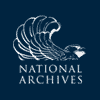31st. A Letter from Count de Rochambeau informed me that the British fleet had left Block Island—that Adml. de Barras would Sail with the first fair Wind for Boston (having 900 of his Soldiers on Board to Man his fleet) and that he should commence his March as soon as possible, but would be under the necessity of Halting a few days at Providence.1
A Letter from Major Talmage, inclosing one from C—— Senr. & another from S. G. dated the 27th. were totally silent on the subject of an evacuation of New York;2 but speak of an order for Marching the Troops from Long Island and the Countermand of it after they had commenced their March; the cause for either they could not assign. Neither C. Senr. nor S. G. estimate the Enemys regular force at New York or its dependencies at more than 4500 men including the New Levies; but C—— says it is reported that they can command five & some add 6,000 Militia & refugees. S. G. disposes of the Enemys force as follow.
| At Fort Washington3 & towards New York—2 Hessn. Regts. | 2 |
| Laurel Hill4—Fort George. 57th B. | 1 |
| Haerlam—at a place called Laurel Hill—38 Do. | 1 |
| At Hornes hook,5 & towds. the City—22d. & 42d. B. Regts. | 2 |
| In the City Hessian Regimts. | 2 |
| On Staten Island | 2 |
| Total on this Isld. . . . . . 1200 | |
| On Long Island | |
| 1st. B. Grenadrs. . . . New Town | 1 |
| 2d. . . . . Ditto . . . Jamaica | 1 |
| Worms Hessian Yagers6 (called by him 6 or 700) No. side of the Plains | 1 |
| Light Dragns. . . . 17th. Regt. at Hempstead Plains | 1 |
| Loyds Neck—detachmets. from New Corps Abt. 6, or 700 | 14 |
The detachment which left Sandy hook the 13th Instt. according to the S. G.’s acct.—consisted of the Troops on the other side —though it is thought he must be mistaken in naming the 46th. & 86th. Regimts.—the first of them being a convention Regimt.7 and the other not in America. By Accts. from Deserters the 37th. Regt. went with the detachment and must be in place of the 46th. as the 80th. must be that of the 86th.
| suppos’d | |
| 43 British Regiments | 300 |
| Anspach—2 Battalions | 700 |
| part of the 86th. | 150 |
| part of the 46th. | 150 |
| Hessian Yagers—abt. | 150 |
| 14508 | |
1. Rochambeau’s letter to GW, 29 May 1781, partly in cipher, is in DLC:GW.
2. Benjamin Tallmadge to GW, 29 May 1781 (DLC:GW). “C—Sen.” (Samuel Culper, Sr.) was an alias for Abraham Woodhull (see entry for 1 May 1781). “S. G.” was the code name for another American spy, George Smith of Nissequogue, Long Island, who before he joined the Culper spy ring had served in a Suffolk County militia regiment as a lieutenant (see , 277, 322). Both enclosures are in DLC:GW.
3. Fort Washington was located in the vicinity of present W. 183d Street in Manhattan. It had been captured by the British in Nov. 1776.
4. Laurel Hill was at present 192d Street and Audubon Avenue on the west bank of the Harlem River. After the American withdrawal from Manhattan, the British had constructed Fort George on the site of the earlier American works. The fort was about half a mile east of Fort Washington.
5. Horn’s Hook, a strip of land extending into the East River near E. 88th Street in Manhattan.
6. Lt. Col. Ludwig Johann Adolph von Wurmb’s Jaeger Corps.
7. That is, part of the so-called Convention Army, consisting of British and Hessian troops surrendered Oct. 1777 after the battles of Saratoga.
8. On 31 May 1781 GW wrote to the marquis de Lafayette in Virginia that “Upon a full consideration of our affairs in every point of view, an attempt upon New York with its present Garrison . . . was deemed preferable to a Southern operation as we had not the Command of the Water.” The letter contained considerable detail on the proposed campaign, including the vital information that “above all, it was thought that we had a tolerable prospect of expelling the enemy or obliging them to withdraw part of their force from the Southward, which last would give the most effectual relief to those States” (MiU-C: Clinton Papers). This letter was among a number of others, including some of GW’s dispatches to Congress and correspondence of the French command, which were captured by the British on 3 June. British Ens. John Moody arrived at Clinton’s headquarters in New York City with the captured mail and was rewarded by the elated Clinton with 200 guineas. “The Capture of this Mail is extremely consequential, and gives the Commander in Chief the most perfect knowledge of the designs of the Enemy” (, 2:536; , 305–6).

![University of Virginia Press [link will open in a new window] University of Virginia Press](/lib/media/rotunda-white-on-blue.png)
